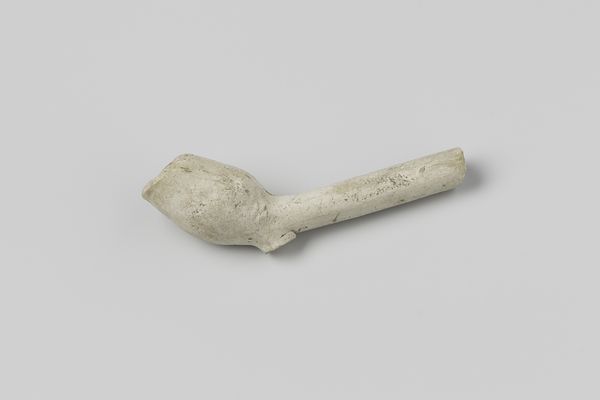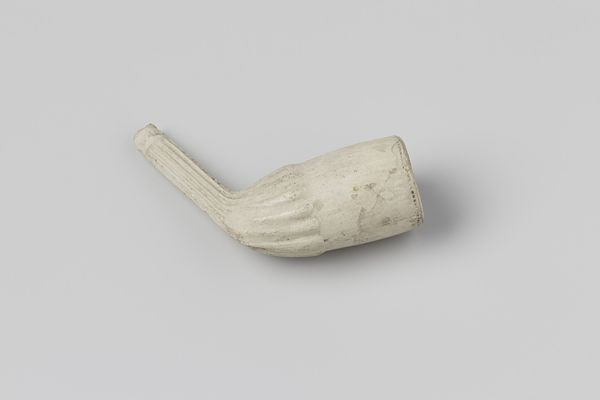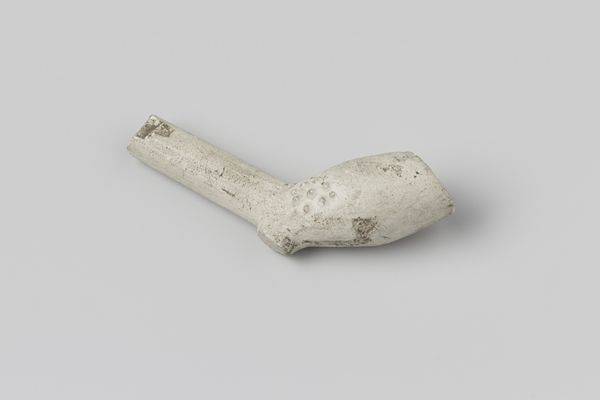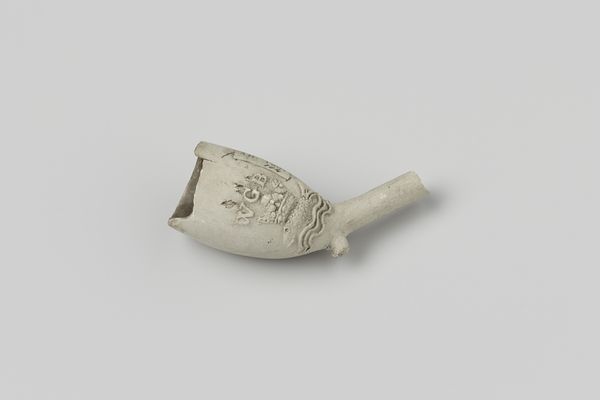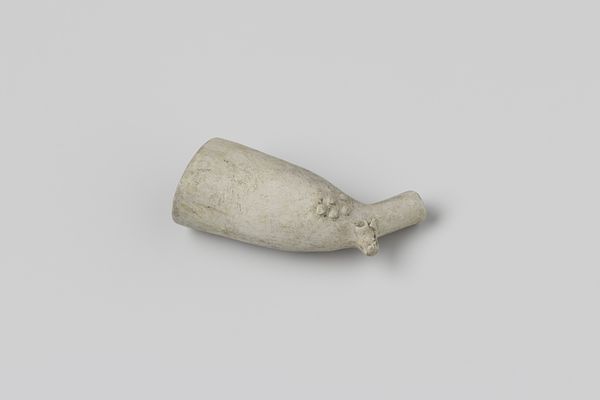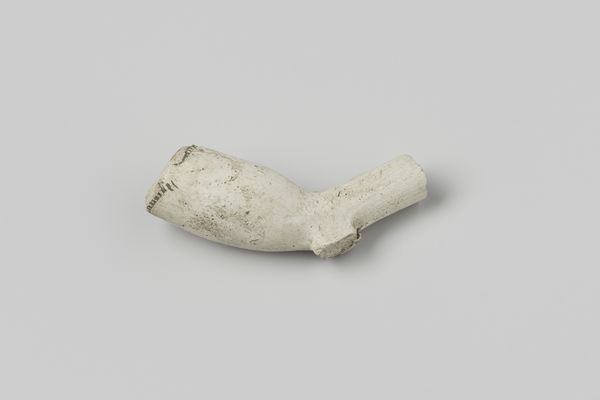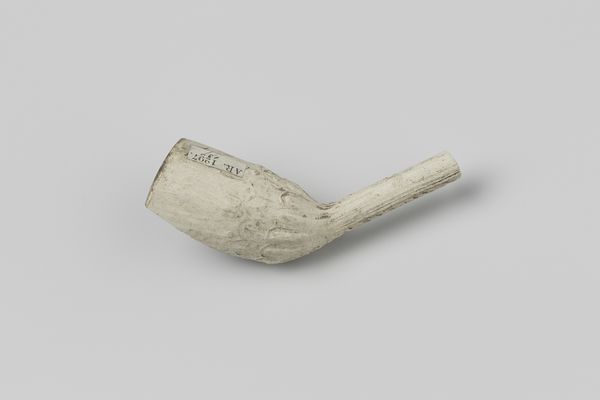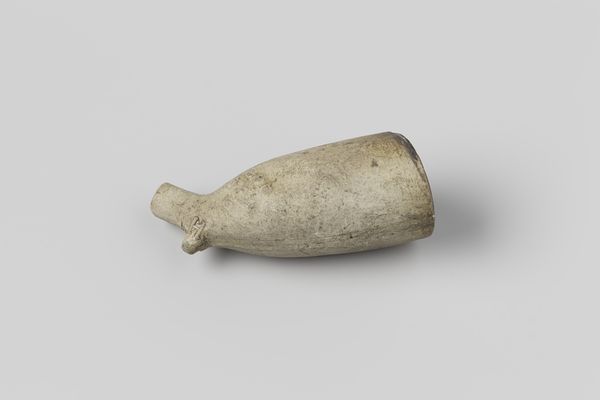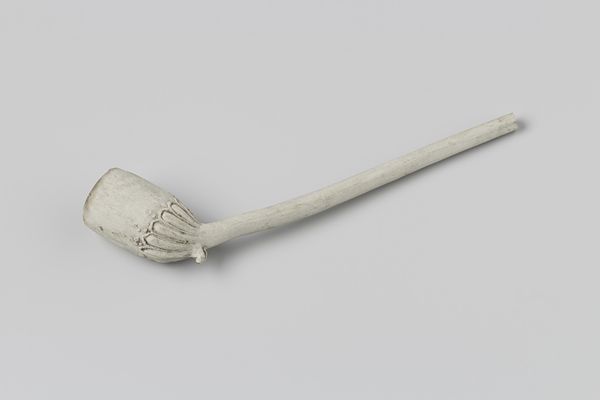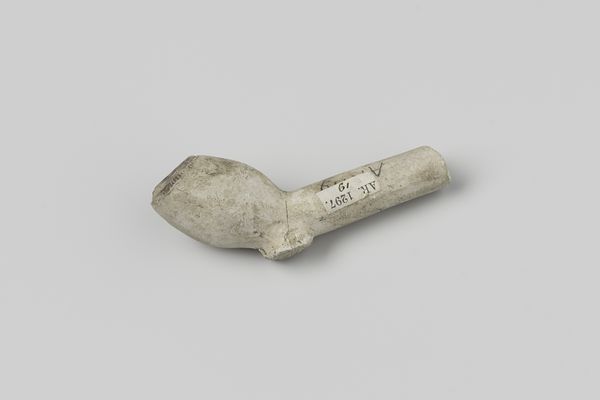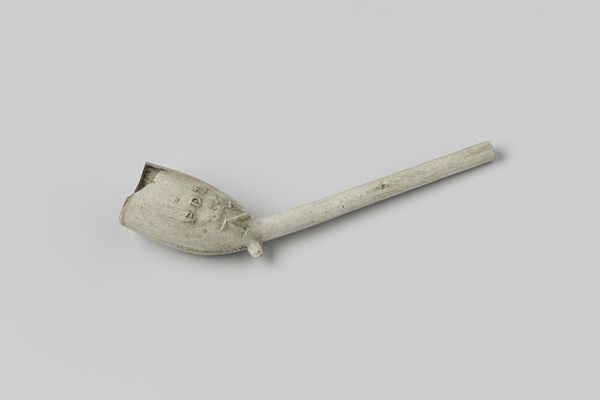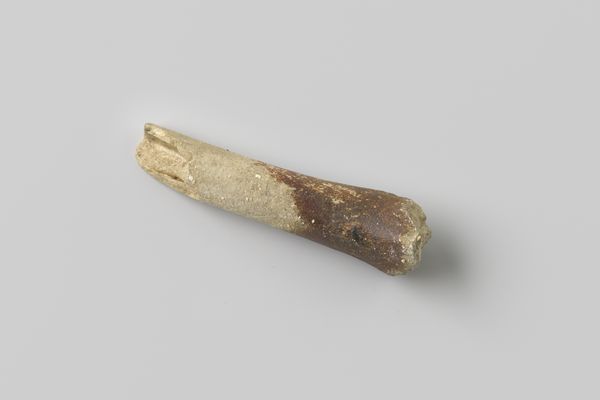
Dimensions: length 3.9 cm, width 2.1 cm, length 7.9 cm
Copyright: Rijks Museum: Open Domain
Editor: So, this is a fragment of a tobacco pipe, made between 1760 and 1800 by Cornelis Huijvenaar. It’s earthenware and it seems so fragile. Looking at it now, I wonder about the person who used it and what their life was like. What can you tell me about it? Curator: It's evocative, isn't it? Think of the clay itself, earthenware—pulled from the earth, shaped, fired. A humble material imbued with ritual and social meaning. The act of smoking, particularly in the Baroque period, wasn't just a pastime; it was a performance. What do you see inscribed on the bowl? Editor: I see some symbols… there are letters that make out a word, but it is hard to make them out completely with all the damage done to it. I guess the act of breaking this pipe was a significant ritual too then? Curator: Precisely! Pipes were often personalized, adorned with imagery or maker's marks. This piece would have carried coded messages for the smoker and their social circle. And a broken pipe? Think about the impermanence, the vanity—'vanitas'—of earthly pleasures. A memento mori in miniature. Can we tell if this specific design can be matched to specific groups or regions? Editor: That's a great question. The museum's notes only mentions that baroque era commonly uses clay. Maybe that’s something we can investigate more. I am still interested in the emotional weight these items carry across centuries. Curator: Yes, these objects—fragments, really—offer tangible links to past lives, allowing us to explore not only their practices but their cultural memory too. Every puff left behind in memory and clay. Editor: Absolutely, thanks for your insight! This made me realize the impact these symbols still have, even if we do not know the smoker's original intention. Curator: My pleasure.
Comments
No comments
Be the first to comment and join the conversation on the ultimate creative platform.
